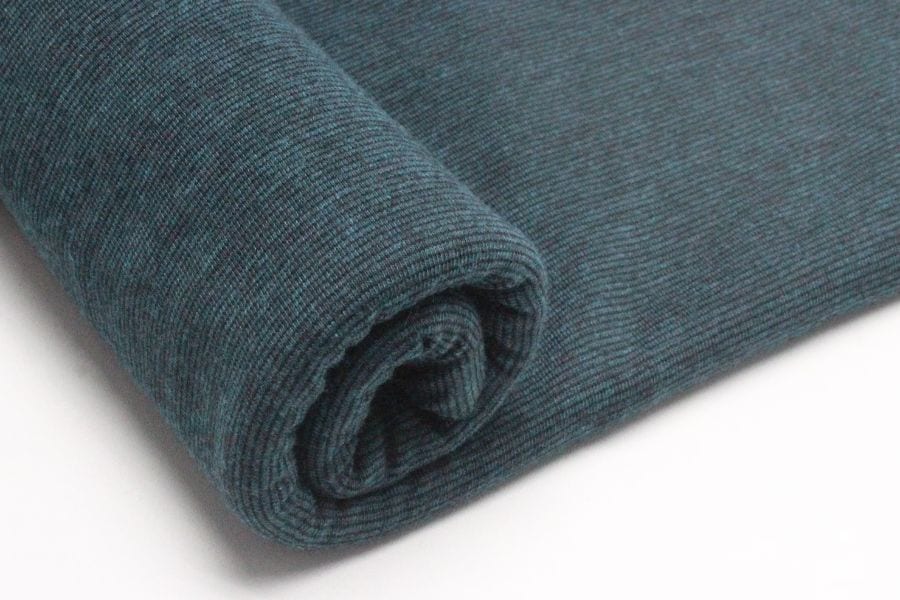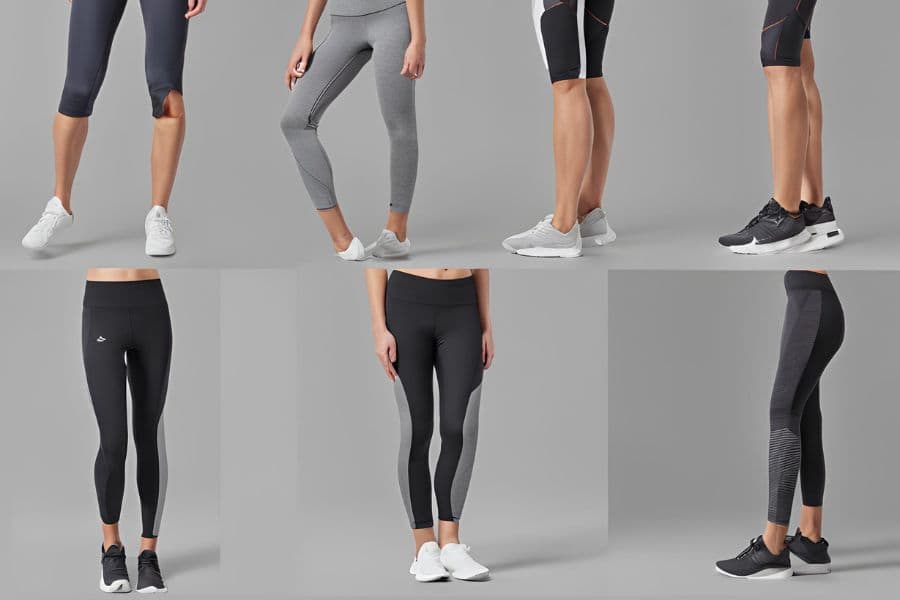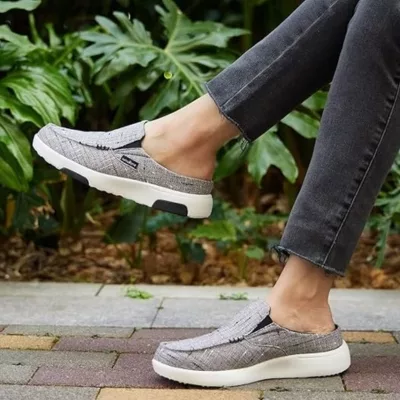With leisure wear taking over everyone’s streetstyle and yoga pants becoming everyone’s go to outerwear, elastane fabric is truly taking over our world. You heard it right. Its elastane that makes your pants so stretchy and comfortable. Put to use and popularised by brands like Spanx and Lululemon, this material is best known for its incredible stretch and recovery properties.
But with sustainability becoming a bigger deal for both consumers and manufacturers, it’s important to understand the environmental impact of elastane. In this article, we’ll explore the world of elastane, its uses, sustainable aspects, and how you make wiser choices with this fabric.
What is Elastane Fabric?

Elastane fabric is a synthetic fiber known for its remarkable elasticity. Originating in the late 1950s, elastane was developed by chemists seeking a durable and flexible alternative to rubber. How sustainable is elastane fabric? That depends on a ton of factors that we shall discuss later in the article.
For now, all you need to know is that Elastane’s unique properties stem from its chemical composition. The fiber consists of a copolymer of polyurethane and polyurea, allowing it to stretch up to 500% of its original length and revert to its original shape. This remarkable stretch and recovery ability make elastane ideal for a wide range of uses, particularly in garments that need the desired breathing room, stretch, and flexibility for movement.
What is Elastane Fabric Made Of?

Elastane is made from a copolymer of polyurethane and polyurea, which gives it the ability to stretch up to 500% of its original length and return to its original shape. This means that a piece of elastane fabric can be stretched to five times its initial size and still return to its original dimensions without losing its shape. This characteristic is due to the polymer chains’ ability to uncoil and recoil smoothly, providing both flexibility and resilience.
The production of elastane involves several stages, including the synthesis of the polymer, extrusion of the fibers, and weaving or knitting into fabric. This process typically requires significant energy and the use of various chemicals.
Read more about the stretch of elastane materials.
Benefits of Elastane Fabric
Before we get into the question of how sustainable are elastane fabrics, let’s discuss some of the benefits that make it an indispensable part of our wardrobe.
1. Comfort and Freedom of Movement
The elasticity of elastane provides unparalleled comfort and freedom of movement, which is why it is widely used in activewear, sportswear, and everyday clothing. When blended with other fibers like cotton, polyester, or nylon, elastane enhances the overall fabric’s ability to conform to the body’s contours, and ensures a snug fit that doesn’t restrict movement. This blend also makes that garments don’t lose their shape their shape with wear and tear.
2. Durability and Shape Retention
Elastane fibers are resistant to abrasion and wear, making them ideal for high-stress applications like sportswear and compression garments. Unlike natural rubber, which can degrade and lose its elasticity over time, elastane maintains its stretchability and strength over a longer period of time. This longevity contributes to the material’s popularity in clothing that requires a lasting, reliable fit, which is something worth considering when we ask how sustainable are elastane fabric.
3. Blendable With Other Fibers
Elastane’s versatility of blending with other fabrics allows manufacturers to experiment with the fabric. For instance, adding elastane to cotton improves the fabric’s flexibility and stretch, making it more comfortable and better fitting. Elastane also blends with synthetic fibers like polyester and nylon, elastane can enhance moisture-wicking properties and overall durability, resulting in high-performance fabrics suitable for athletic wear.
Properties of Elastane Fabric
Stretch and Recovery: The most notable property of elastane fabric is its ability to stretch significantly and recover its original shape. This makes it ideal for garments that require a snug fit and flexibility, such as activewear and sportswear.
Durability and Elasticity: Elastane fabric is highly durable and resistant to wear and tear. Its elasticity ensures that garments retain their shape and fit over time, even after multiple washes.
Breathability and Comfort: Elastane is often blended with other fibers like cotton, polyester, or nylon to enhance the breathability and comfort of the fabric. This combination results in clothing that is not only flexible but also comfortable to wear.
Uses of Elastane Fabric

Sportswear and Activewear: Elastane fabric is a staple in sportswear and activewear due to its stretchability and moisture-wicking properties. From yoga pants to compression garments, elastane provides the flexibility and support needed for physical activities.
Everyday Clothing: In everyday clothing, elastane is commonly found in jeans, leggings, and underwear, providing a comfortable fit and enhancing the overall wearability of these garments.
Industrial and Medical Uses: Beyond fashion, elastane is used in industrial applications such as automotive textiles and medical products like bandages and compression stockings, where its stretch and recovery properties are invaluable.
Is Elastane Fabric Sustainable?

Elastane, also known as spandex or Lycra, is a synthetic fiber known for its exceptional elasticity. While it offers many functional benefits in terms of flexibility and comfort, its sustainability profile is complex and generally less favorable compared to natural fibers. Here are some things to keep in mind as we settle on the question: Is elastane fabric eco-friendly?
- Environmental Impact of Production: The production of elastane fabric has notable environmental impacts, primarily due to the energy-intensive processes and chemical usage. The synthesis of polyurethane involves toxic substances that can harm the environment if not managed properly.
- Non-Biodegradability: Elastane is not biodegradable, which means that garments containing this fiber persist in the environment for many years after disposal. This contributes to the growing problem of textile waste in landfills.
- Microfiber Pollution: Washing elastane-containing garments releases microfibers into water systems, which are not easily filtered out and can harm aquatic life.
- Disposable Fashion: The stretch and comfort provided by elastane make it a popular choice for trendy, fast fashion items. These items are often produced quickly and inexpensively, leading consumers to purchase more clothing than they need.
- Short Lifespan: Fast fashion items, including those with elastane, are often designed for short-term use. The emphasis on constant newness and low-cost production results in clothing that wears out quickly, encouraging a cycle of frequent disposal and replacement.
Sustainable Alternatives To Elastane Fabric

Now that we have settled on the fact that elastane ain’t all that good the planet, let’s talk about what we can do to make sure that we don’t lose our stretchy leggings in lieu of finding sustainable alternatives to elastane fabric. Here are top alternatives to elastane fabric that offer similar qualities of stretch and flexibility while being more sustainable:
- Tencel (Lyocell) with Stretch
Tencel, or lyocell, is an eco-friendly fabric made from wood pulp, usually from eucalyptus, beech, or spruce trees. When blended with other fibers that offer stretch, such as a small percentage of elastane or naturally stretchy fibers, it can provide a sustainable alternative with a similar feel.
Pros: Biodegradable, produced through a closed-loop process that recycles water and solvents.
Cons: May still contain a small percentage of elastane for stretch, though much less than conventional stretch fabrics.
- Recycled Polyester with Stretch
Recycled polyester is made from post-consumer plastic bottles or other recycled polyester garments. When combined with stretch fibers, it can mimic the properties of elastane while reducing waste.
Pros: Reduces landfill waste, lower energy consumption compared to virgin polyester.
Cons: Still a synthetic fiber, not biodegradable.
- Organic Cotton with Stretch
Organic cotton is grown without synthetic pesticides or fertilizers, making it a more sustainable option. Blending organic cotton with a small amount of biodegradable stretch fibers, like natural rubber or bio-based elastane, can create a fabric with the necessary elasticity.
Pros: Reduced environmental impact from farming, biodegradable options available.
Cons: Organic cotton production can be water-intensive.
Innovative materials like natural rubber and biodegradable fibers are being developed to offer the elasticity of elastane without environmental drawbacks. These alternatives are still in the early stages of adoption but hold promise for a more sustainable future in textiles.
Summing Up!
Elastane fabric, with its exceptional stretch and comfort, plays a vital role in modern textiles. However, its environmental impact cannot be overlooked. By understanding the properties, uses, and sustainability of elastane, consumers and manufacturers can make more informed choices. As the industry evolves, embracing sustainable practices and alternatives will be crucial in reducing the ecological footprint of elastane fabric and promoting a more sustainable future.
To continue your exploration of sustainable materials, browse through “Sustainable Fabrics: Everything You Need to Know” to adopt comfort and climate positive actions together with Ecowiser.
Frequently Asked Questions (FAQs)
Is elastane fabric sustainable?
Elastane fabric is not inherently sustainable due to its synthetic nature and the environmental impact of its production processes. However, advancements in recycling and the development of bio-based elastane are steps towards improving its sustainability.
What is Sustainable Elastane Fabric?
Sustainable elastane fabric refers to elastane that is produced using eco-friendly methods, such as recycling fibers, reducing chemical usage, and employing renewable energy sources.
Is elastane fabric sustainable?
While elastane itself is not a sustainable fabric, efforts to enhance its production processes and develop eco-friendly alternatives are making it a more sustainable choice in the textile industry.
Is elastane fabric eco-friendly?
Elastane fabric is not typically considered eco-friendly due to its synthetic nature and production impact. However, ongoing research and development in eco-friendly production methods is improving its environmental footprint.








